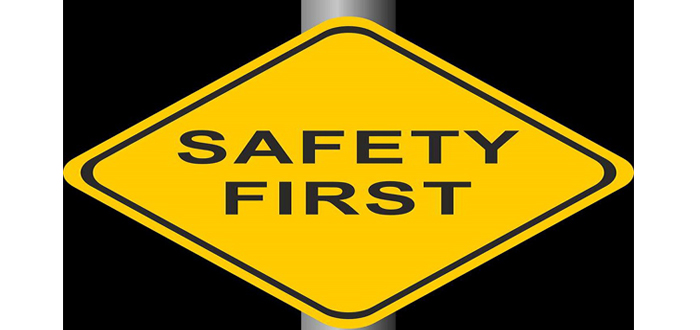-
Nutrivend selects Forterro’s Orderwise to support online expansion and streamline operations - April 11, 2025
-
ARROWXL LAUNCHES AMBITIOUS ZERO WASTE ROADMAP - April 8, 2025
-
THE BCMPA’S NEW CAMPAIGN DRIVES OUTSOURCING SUCCESS IN Q1 - April 7, 2025
-
BLACKOUT TECHNOLOGIES TARGETS TELEMATICS-INTEGRATED MOBILE DEVICE BLOCKING TO COMBAT SMARTPHONE DISTRACTION - April 1, 2025
-
Sparck Technologies awarded Royal designation - March 27, 2025
-
OpenADR Alliance announces first OpenADR 3.0 certified products with EVoke Systems, E.ON Energy and Universal Devices - March 25, 2025
-
Growing fulfilment and contract packer appoints new Managing Director - March 25, 2025
-
When is it time to invest in a WMS? Understanding the key trigger points - March 25, 2025
-
eCapital helps Vantage Recruitment on its journey to financial success - March 24, 2025
-
Hugo Beck Celebrates 70 Years of Packaging Innovation with Open House Events - March 20, 2025
Safety Symbols
Safety at Work
Employee safety at work is one of the most rewarding areas of management policy and one where companies are truly able to make positive and influential changes that affect the mental health of their staff. You can find some more information on Kaiser+Kraft. By implementing safety management objectives, companies can make their workplace secure and make sure that their work teams know what to do should an emergency arise.
Contemporary safety management plans also take into account the considerable mental and psychological benefits for employees of working in an environment that they see as “safe”.
Important symbols
When it comes to employee awareness and education, using the correct symbols and signs to guide behaviour can be positive and encouraging. The use of bold, recognisable warning colours and symbols is a simple and effective way to ensure your staff remain aware of emergency, daily work safety and monthly checks. Warning colours like red and yellow are colours found in nature that ensure that animals and plants are wary of dangerous substances. So, too, are humans biologically primed to note certain colours, shapes and images.
Fire Protection Symbols
A fire in the workplace, whether accidental or intentional is one of the most devastating events in a factory, office or warehouse. First and foremost is the well-being of staff members, but a fire can also result in the loss of millions in product, raw materials or irreplaceable plans, designs and documents, including employee information about salaries, pension schemes and medical insurance. Symbols for fire prevention include fire protection signs to indicate the location of fire extinguishers, ladders, alarms and telephones and the location of elevators for fire fighting staff.
Haradous Goods Markings
Warning symbols for products or equipment that may be harmful to human health are a critical aspect of employee safety. The proper marking of bottles, cans, canisters and pallets of hazardous items is essential. Signs and symbols include explosive substance signs, bomb warnings, gas canister labels, corrosive substances and general warning symbols like the instantly recognisable skull and crossbones.
Mandatory and Prohibition Symbols
Mandatory and prohibition symbols are important for employee awareness and can be used on fences, doors, screening areas, workshops and any area where staff need to be informed about cautious or restricted entry. Examples include reminders about head protection, hand washing, waste disposal, footwear or reminders about breathing protection.
Rescue Symbols
Rescue symbols instruct staff about what to do to ensure their safety and that of other employees. Rescue signs include escape routes, like emergency exits, and the direction of movement, as well as the location of medical staff, eye wash stations or the locations of fire escapes. Rescue signs are usually green and white and square or rectangular-shaped.
Warning Symbols
Warning signs and symbols warn employees about potential dangers. Examples are yellow triangle signs that indicate slippery floors, overhead hazards, toxic materials, dangerous large vehicles or the danger of physical harm when using machinery. You can see more examples of effective safety symbols and signs here.
































